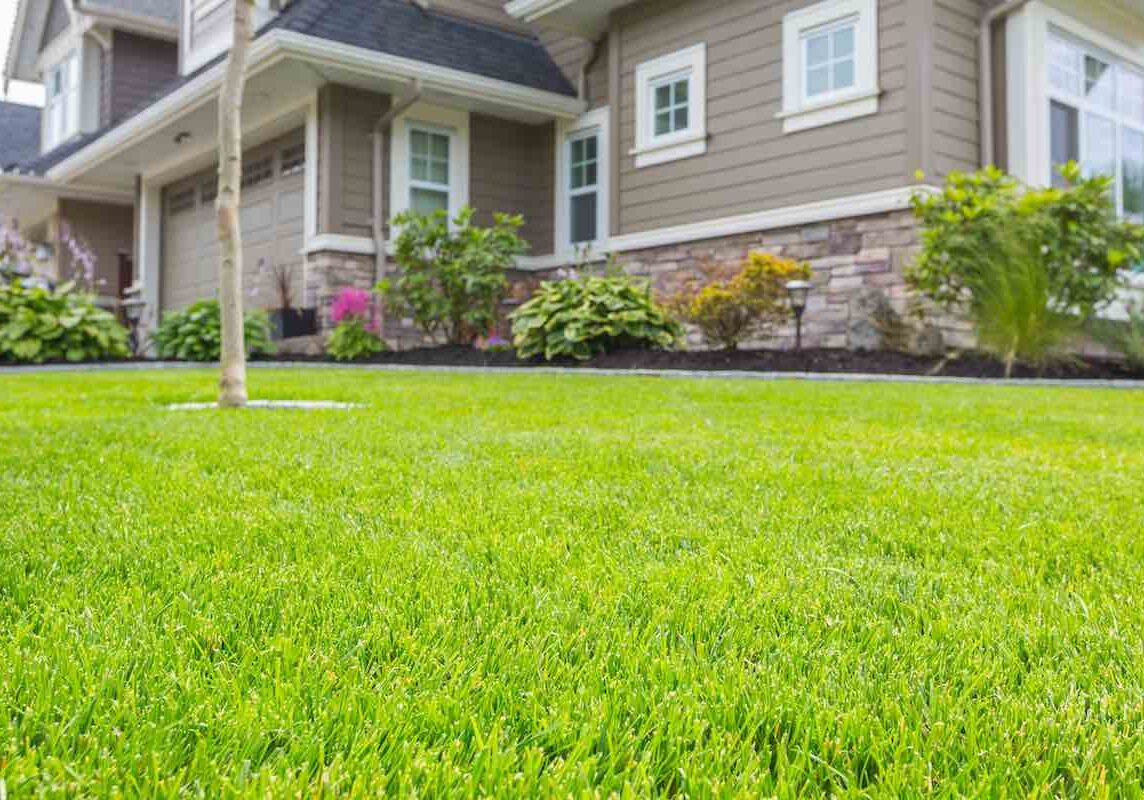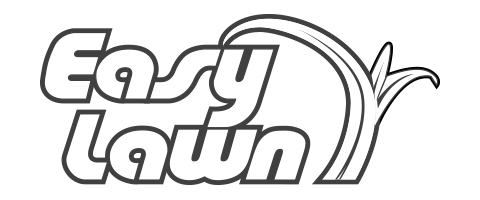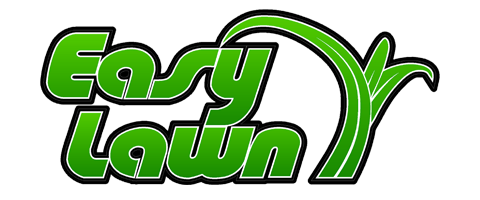Insider Tips About the Cost to Reseed a Lawn

Share this article!
Getting ready to reseed your lawn? Lawn reseeding costs vary from region to region, the size of the yard, and especially, the type of seeding method used, as well as the types of grass seed selected.
Generally, the price for a lawn reseeding project ranges from as low as a few hundred dollars for a small area to several thousand dollars for larger lawns. Let’s consider the following important factors that impact the cost to reseed a lawn.
Factors that Influence the Cost of Lawn Reseeding
1. Lawn Size
It should stand to reason that the larger the lawn area, the more money you should expect to pay to seed it. And this is true across other variables like region, seed type, and seeding methods.
The low end of the national average cost to reseed per square foot is about $0.10, while the high end is about $0.20 per square foot.
2. Seed Species
The old adage, you get what you pay for, applies to the average costs for types of grass seeds, too. Though species like Ryegrasses and Bermuda grasses tend to be less expensive, and provide decent results across a range of climates and soil types.
If you’re looking for a specific aesthetic for your lawn project, or need to seed a higher maintenance area, whether that be a drier yard, or a difficult soil composition, you may need to choose a seed type that better suits the particular conditions of the project, which may be more expensive.
Zoysia Grass and Centipede Grass are among the more expensive seed varieties, but can provide a nicer-looking, more consistent look and color depending on the area and climate. The best idea is to thoroughly assess the reseeding location, so you know everything from the soil pH to the average sun exposure, and use that guidance to match your seed types appropriately.
3. Lawn Preparation Needs
The prep work that needs to be done to your lawn area will also impact how much you can expect to pay for your seeding project. For example, do you need to rototill or otherwise de-compact or aerate the soil? If you’re seeding in an area that’s been under construction or been neglected for a long time, this may be necessary for any type of seed to establish.
Similarly, it’s a good idea to find out if the soil is missing any key nutrients so you can provide the best foundation for your selected grass seed type. A soil test can help you determine what type of fertilizer or soil amendments are needed to boost soil fertility and fast-track seed germination. That way you don’t end up wasting money attempting to reseed in infertile soil.
4. Reseeding Method
There are two basic seeding methods you can use to get a new lawn that don’t involve laying new sod: hand seeding and hydroseeding.
Each method has its own unique advantages and can be suited to a specific area based on its attributes.
Hand or Broadcast Seeding
Hand seeding is a seeding method that disperses seeds either by hand, or via a rotary broadcast seeding device. Because hand seeding can be done by a homeowner or professional fairly simply, it’s one of the most affordable seeding methods.
However, the cost of hand seeding still depends on the type of seeds being used, the size of the area being seeded, and any soil amendments that may be needed. On average, hand seeding costs between $0.10 and $0.20 per square foot. It’s generally good for reseeding small areas.
Hydroseeding
Hydroseeding is a seeding method that combines water, seeds, fertilizers, mulch, and sometimes other additives, like tackifiers to hold seeds in place, based on the specifications of the project area. This ‘slurry’ mixture is then sprayed from a hose to cover the desired area. It can be much faster to apply than hand seeding.
Hydroseeding is typically more expensive than hand seeding because it requires specialized hydroseeding equipment. Hydroseeding is also much more efficient and generally provides better results than hand seeding, as it all but guarantees uniform coverage of seed that establishes well because it includes the nutrients seeds need to germinate quickly and establish. You can learn more about whether hydroseeding is worth the cost with our breakdown. Often for larger areas, the efficiency of hydroseeding offsets the equipment costs.
5. Labor and Equipment
The price range for lawn reseeding costs also depends on the amount of labor and equipment needed to both prepare the soil and apply the seed. For methods like hand seeding, the equipment and materials can be relatively inexpensive, and can be done by one or two people, depending on the size of the area.
For hydroseeding projects, it is generally recommended to prepare the soil first for the very best results. Depending on the size and condition of the area, this can cost anywhere between a few cents per square foot, to upwards of $6 per square foot. Factors like soil compaction and composition, as well as lawn size, and time frame all influence how much it can cost to properly prepare soil.
The Cost to Reseed a Lawn by Square Foot
The hydroseeding process itself can cost, on average, between $0.08 cents and $0.20 cents per square foot, while hand seeding ranges between $0.10 and $0.20 cents. These estimates are all dependent on regional variables like supply, availability, labor costs, and equipment. Prices also tend to be higher in more urban areas where demand is generally higher.
Time is also a consideration as hand seeding, even with a team of people, will take much longer than hydroseeding. When hand seeding, you must walk over the area manually spreading seeds, and then apply any fertilizers and water the seeds need to establish. Hydroseeding, by comparison, covers large areas with seeds and fertilizers simultaneously, and can often be done in as little as 3 hours for an acre or more. Depending on the size and scope of your seeding project, for example if you’re looking to seed something large, hydroseeding may well be the more efficient and effective solution. The table below breaks down the average cost to reseed a lawn by hand seeding and hydroseeding.
| Yard Size | DIY Hand-Seeding | Professional Hydroseeding |
|---|---|---|
| 500 sq. ft. (0.01 acres) | $50 – $100 | $40 – $100 |
| 1,000 sq. ft. (0.02 acres) | $100 – $200 | $80 – $200 |
| 5,000 sq. ft. (0.11 acres) | $500 – $1,000 | $400 – $1,000 |
| 10,000 sq. ft. (0.25 acres) | $1,000 – $2,000 | $800 – $2,000 |
| 21,780 sq. ft. (0.50 acres) | $2,178 – $4,356 | $1,742 – $4,356 |
| 32,670 sq. ft. (0.75 acres) | $3,267 – $6,534 | $2,613 – $6,534 |
| 43,560 sq. ft. (1.00 acres) | $4,356 – $8,712 | $3,484 – $8,712 |
Reduce Lawn Reseeding Costs by Renting a Hydroseeder
For many people looking to reseed their lawn, the largest cost associated with hydroseeding as opposed to hand seeding is the cost of the hydroseeder itself. This can be offset by renting a hydroseeder for a specific job rather than investing in a machine yourself. Especially if hydroseeding is something that’s infrequently done, or done only once or twice per year, you may find that renting the equipment is more cost effective than owning one.
How to Tell If Your Lawn Needs Reseeding
A good rule of thumb to determine whether or not it’s time to refresh your yard with reseeding is to look around for brown patches, thinning areas, or if it simply looks a little worn out. Additionally, if you haven’t done any seeding or fertilizing within the last 4-5 years, it’s probably time to consider reseeding.
Conclusion
While the costs to reseed a lawn vary by region, seed type, labor and equipment involved — no matter your budget or resources, there’s an effective way to reseed your lawn. Learn more in our Resources Center or contact us directly so we can answer your lawn seeding questions.
Lawn Reseeding FAQs
When is the best time to reseed a lawn?
The best time to reseed a lawn is in the late summer or early fall. This can vary somewhat by region, but it’s always best to allow at least two months before a frost is expected to allow seeds to germinate in the milder temperatures and more frequent rainfalls of the season.
Can I just throw grass on my lawn to reseed it?
No. While it’s possible you may get lucky and end up with some grass seeds taking, in general this approach will lead to poor germination and poor results. This makes sense when you consider the environment: seeds need a hospitable environment of consistently moist, arable soil to germinate. If seeds are competing with established grass for nutrients and space, the results are likely to be less than optimal.
Do I need to remove dead grass before reseeding?
Yes. For the best, quickest results, dead grass should be removed or tilled into soil before reseeding.
How long after reseeding can I use fertilizer?
In general, it’s best to wait about 6 to 8 weeks after seeding to apply fertilizer. Be sure to read the specific instructions on the fertilizer you’ve chosen to make sure it’s a good fit for your grass seeds and soil type.
How much grass seed do I need?
When starting new grass from scratch, plan on using about 4-7 lbs of seed per thousand square feet, or 175-250 lbs per acre.
What is the difference between reseeding and overseeding?
Overseeding is a method of seeding that can be used when the area has at least 50% healthy grass. Seed is applied over the existing healthy grass, giving this seeding method its name.
Reseeding is a seeding method that seeds over an area that was previously grass, and either most of it has died off or been otherwise disturbed.

